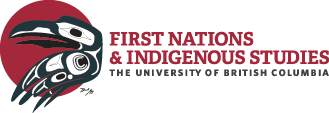Gustafsen Lake
Overview of the Gustafsen Lake Stand-off Gustafsen Lake or Ts’Peten, a region close to 100 Mile House in British Columbia, in Secwepemec (Shuswap) territory, was the location of a stand-off…
Marginalization of Aboriginal women
A Brief History of the Marginalization of Aboriginal Women in Canada Aboriginal women in Canada frequently experience challenges and discrimination that are not necessarily shared by non-Aboriginal women, nor are…
Union of British Columbia Indian Chiefs
The Union of British Columbia Indian Chiefs (UBCIC) is a non-profit political organization representing numerous First Nations across BC in order to protect and further Aboriginal title and rights. The…
Global Actions
There are an estimated 370 million Indigenous peoples worldwide, living in 70 different countries, according to the United Nations (U.N.) Permanent Forum on Indigenous Issues. Despite vast diversity among Indigenous…
Constitution Act, 1982 Section 35
What is Section 35 of the Constitution Act? Section 35 is the part of the Constitution Act that recognizes and affirms Aboriginal rights. The Canadian government did not initially plan…
Reserves
Indian Reserves In various ways in different parts of [British Columbia], Native life came to be lived in, around, and well beyond these reserves, but wherever one went, if one…
Sparrow Case
R. v. Sparrow [1990] R v. Sparrow was a precedent-setting decision made by the Supreme Court of Canada that set out criteria to determine whether governmental infringement on Aboriginal rights…
Guerin Case
R. v. Guerin [1984] R. v. Guerin is a landmark Supreme Court of Canada decision that established the Canadian government’s fiduciary duty to First Nations, a trust-like relationship stemming from…
Aboriginal Title
What is “title?” Aboriginal title refers to the inherent Aboriginal right to land or a territory. The Canadian legal system recognizes Aboriginal title as a sui generis, or unique collective…

